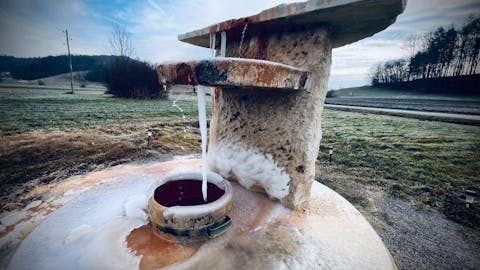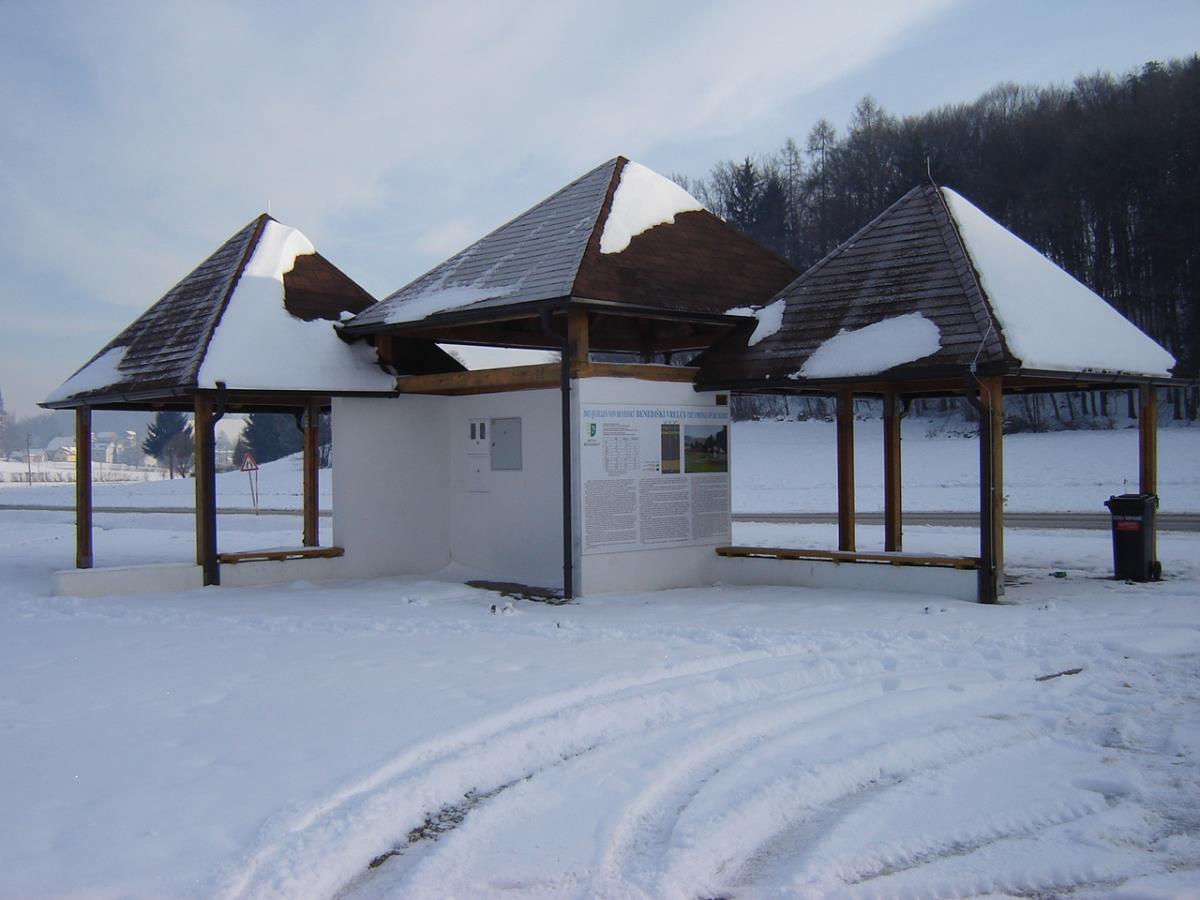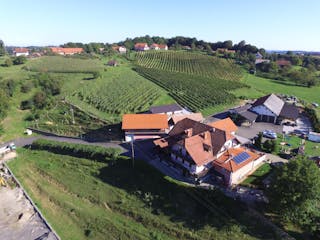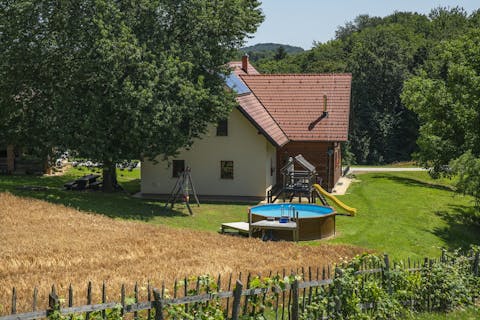
BENEDIKT MUNICIPALITY
Slatin springs
The wealth of mineral and thermal waters in Štajerska has been described by various authors since the late 16th century. Early writers focused primarily on the medicinal value of these springs. A systematic review of the earliest articles on mineral waters in Styria was provided by Ciril Šlebinger (1932). His survey shows that Austrian geologists in the 19th century were particularly interested in studying Styria’s mineral waters. In the same study, Šlebinger also offered an overview of Štajerska mineral springs, which he divided into several groups:
The Gleichenberg group, located in present-day Austria and covering the tectonic unit of the Graz Basin;
The Slovenske gorice group, which, in addition to the Central and Eastern Slovenske gorice, includes springs in the Upper and Lower Mura Plains and partly in Prekmurje (Petanjci);
The Styrian thermal line group, comprising thermal and mineral springs along the Labot and Šoštanj tectonic faults, stretching on both sides of the Vitanje Karavanke, from Topolšica to Rogaška Slatina;
The Posavje group (Rimske Toplice).
In the Slovenske gorice, Šlebinger mentioned mineral water springs in Plitvice, Spodnji Ivanjci, Police (where seven springs supposedly once existed), Spodnja Ščavnica, Ihova, Stavešinci, Očeslavci, Okoslavci, Grabonoš, Negova, Benedikt in Slovenske gorice, Spodnji and Zgornji Žerjavci, and Lormanj. He also noted the existence of several smaller springs, though without precise locations. Of particular interest was the spring on Stavešinski Vrh, nicknamed Slepica (“The Hen”), as local lore claimed it blinded a bird that flew over it (Šlebinger, 1932).
Later geological research revealed that the Slovenske gorice region is one of the greatest geothermal anomalies in Slovenia, with unusually high subsurface temperatures. While Austria has exploited mineral and thermal springs for centuries, on the Slovenian side only Radenci Spa and a few pools developed on the periphery of Slovenske gorice. Many smaller springs of mineral and thermal water remained unused until recently, when new studies demonstrated their potential for integration into the region’s tourism offer.
One of the more thoroughly studied areas is the Benedikt region, which offers promising opportunities for the development of small-scale recreational and spa tourism. The carriers of mineral waters in the Benedikt area are Tertiary sediments of Miocene (Sarmatian) age. Mineral waters here occur at shallow depths of up to 100 m, with temperatures not exceeding 20 °C. The sandy aquifers are poorly permeable and do not allow for large-scale extraction. However, lower Miocene (Helvetian) sediments are more consolidated, with fracture porosity, and may represent a geothermal aquifer suitable for use. Based on other sources in northeastern Slovenia, yields of 0.5–5 l/s may be expected. An exception is the Cafova slatina, where in 1973 test drilling yielded mineral water at 4 l/s and 19 °C from a depth of 67–127 m. After testing, its output stabilized at 0.2 l/s (Possibilities of Capturing Thermal Water…, 1997).
As mentioned, Slovenske gorice exhibits unusually high geothermal gradients. The chemical composition of the waters depends on the mineralogical and petrographic composition of the aquifer and underlying strata. The Geological Survey of Ljubljana analyzed three boreholes (Helena, Pavla, and Ana) in the Sarmatian aquifer. Slatina Helena is relatively low in mineralization (700 mg/l residue), dominated by calcium, followed by magnesium, sodium, and potassium cations, with bicarbonate, chloride, and sulfate anions. Its type is calcium–magnesium–(sodium) bicarbonate. Slatina Pavla has higher calcium but lower magnesium, more bicarbonate, and fewer chlorides and sulfates, also classed as calcium–magnesium–(sodium) bicarbonate. Slatina Ana, from the deepest borehole, shows increased calcium and sodium, higher potassium and bicarbonate, and lower chloride. Its type is calcium–sodium–magnesium bicarbonate (Geothermal Exploratory Boreholes…, 1999).
Geological assessments suggest that sufficient thermal water could be harnessed in the area to support a small recreational and spa facility.
Text from the Anthology of the Municipality of Benedikt
Author: Igor Žiberna

How to Reach Slatin springs
Recommended in Benedikt
Church St. Benedikt
Church of the Three kings
Čolnikova Vine
Burial mound
Sacristan's house



